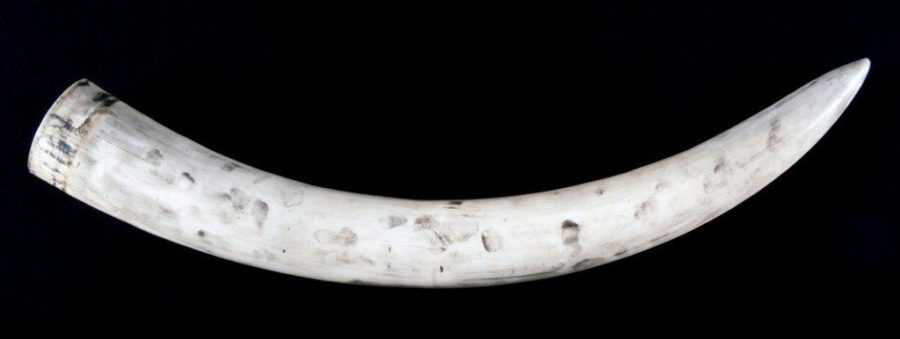Can you lift fingerprints from an elephant tusk a whole month after it’s been poached? Sounds impossible – but now it’s not, thanks to the ingenuity of a team of forensic scientists in London.
Cutting-edge powders
They’ve developed a kit using cutting-edge fingerprinting powders made up of particles 75 times smaller than a pinhead. Ivory may look smooth – but under the microscope, it’s full of ridges and tiny holes. Previously, wildlife crime investigators using traditional fingerprinting powders had almost no success once the prints were more than two or three days old.
Future generations
The kit is now well past the testing phase and has been well received in a number of countries, including (most recently) France. The very real hope now is that wildlife crime investigators on the frontline in Africa and Asia will be able to use it to massively up their chances of catching poachers – and in this way safeguard elephants for future generations. Already in Kenya there have been 15 arrests in the last 15 months, thanks to the use of these kits. An estimated 35,000 elephants are lost to poaching across the African continent each year.
Hippo teeth too
And there’s more good news: these powders can also be used to combat the poaching not just of elephant tusks but of tiger claws and of hippo teeth which are increasingly being poached in southern Africa. Zimbabwe reported one of its first recent cases of illegal hippo teeth possession in December last year, with two people arrested in Gokwe.
Speaking to the experts
We spoke to Dr Leon Barron, Senior Lecturer in Forensic Science at King’s College London, to find out more about how his team is helping lead the forensic fight against international wildlife crime:
What led you to this particular project?
In 2014, we were approached by the Metropolitan Police Service to develop an idea to use new small scale powders to enhance fingermarks on seized ivory. Traditional powders had not worked very well for marks that were present on ivory longer than 2-3 days. I thought this was a very interesting idea that could work. I designed and led experiments to allow this technique to be validated and [it was] published in the journal Science & Justice. Publication of this work was critical for it to be accepted more widely so that it could be used to support expert witness testimony in court. It was a remarkable success and our detection window for fingermarks increased to 28 days.
Where does the testing take place?
The effectiveness of this method means that the testing can be performed at the scene of the crime or at the ports directly, without the need for a laboratory, at least in the first instance. This would help recovery of the fingermark evidence in the shortest time available. Obviously, once a picture has been taken or the fingermark has been lifted off the tusk using adhesive tape, this can be transported to the police station for matching or database searching.
Success stories from the field?
The International Fund for Animal Welfare has recognised the value of the kits. They have sponsored more than 70 of them to be sent overseas. Several have been deployed in the UK and the EU. We recently had a lot of success in Africa, especially with the Kenyan Wildlife Service. Since October 2016, they have been using these kits successfully at their headquarters or at their Jomo Kenyatta International Airport office in Nairobi. This has already led to 15 arrests for possession of various amounts of raw and worked ivory totalling 16 kilos!
What’s your long-term hope for your kit?
Our plan is to build fingerprint databases and training programmes to help catch those responsible on the ground. This not only serves in the fight against wildlife crime but also to build forensic capabilities in developing countries for all types of forensic casework. Secondly, we are now working on methods to integrate the powdering technique with DNA profiling which has been successful in identifying people from their fingerprints.
The longer term plan for us at King’s College London is to rapidly build forensic capability to answer big global questions by providing realistic, practical solutions. Supporting law enforcement is where we are enabling action at the moment. This is not just an African or Asian issue. Ultimately, we would like to see a change to the culture of ivory trade and its perceived value as a luxury or medicinal commodity. When we encounter the sale of any ivory-based goods, we must make a responsible decision to say no to supporting it.

